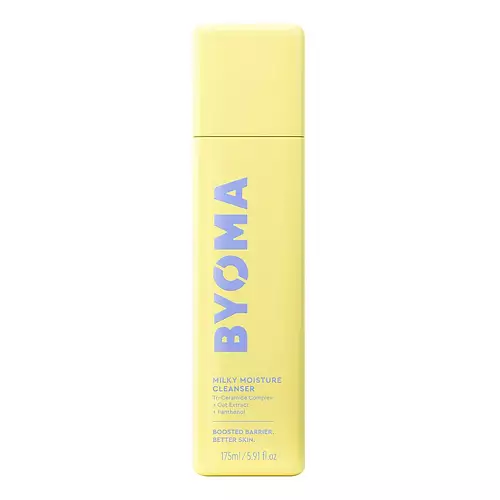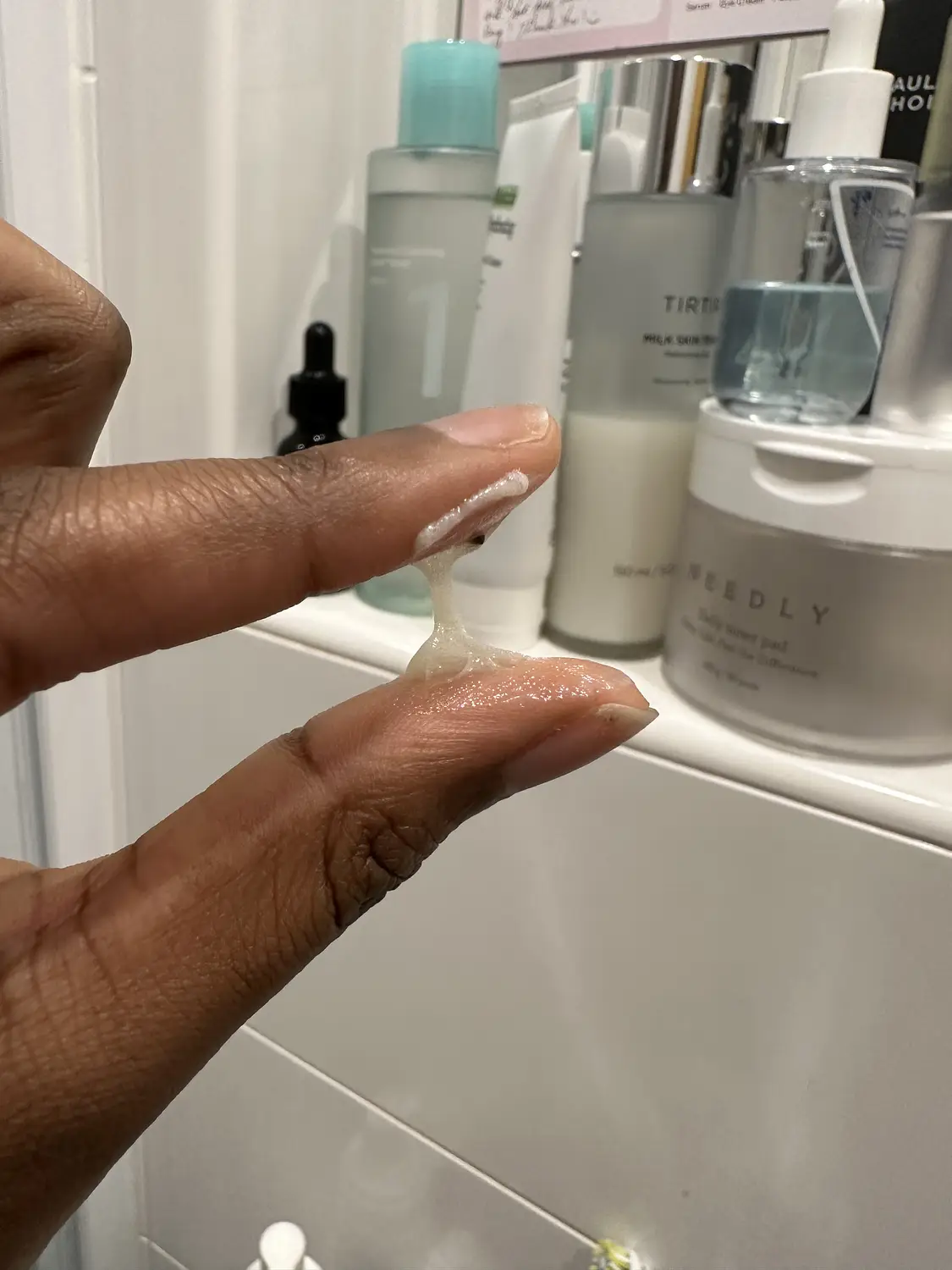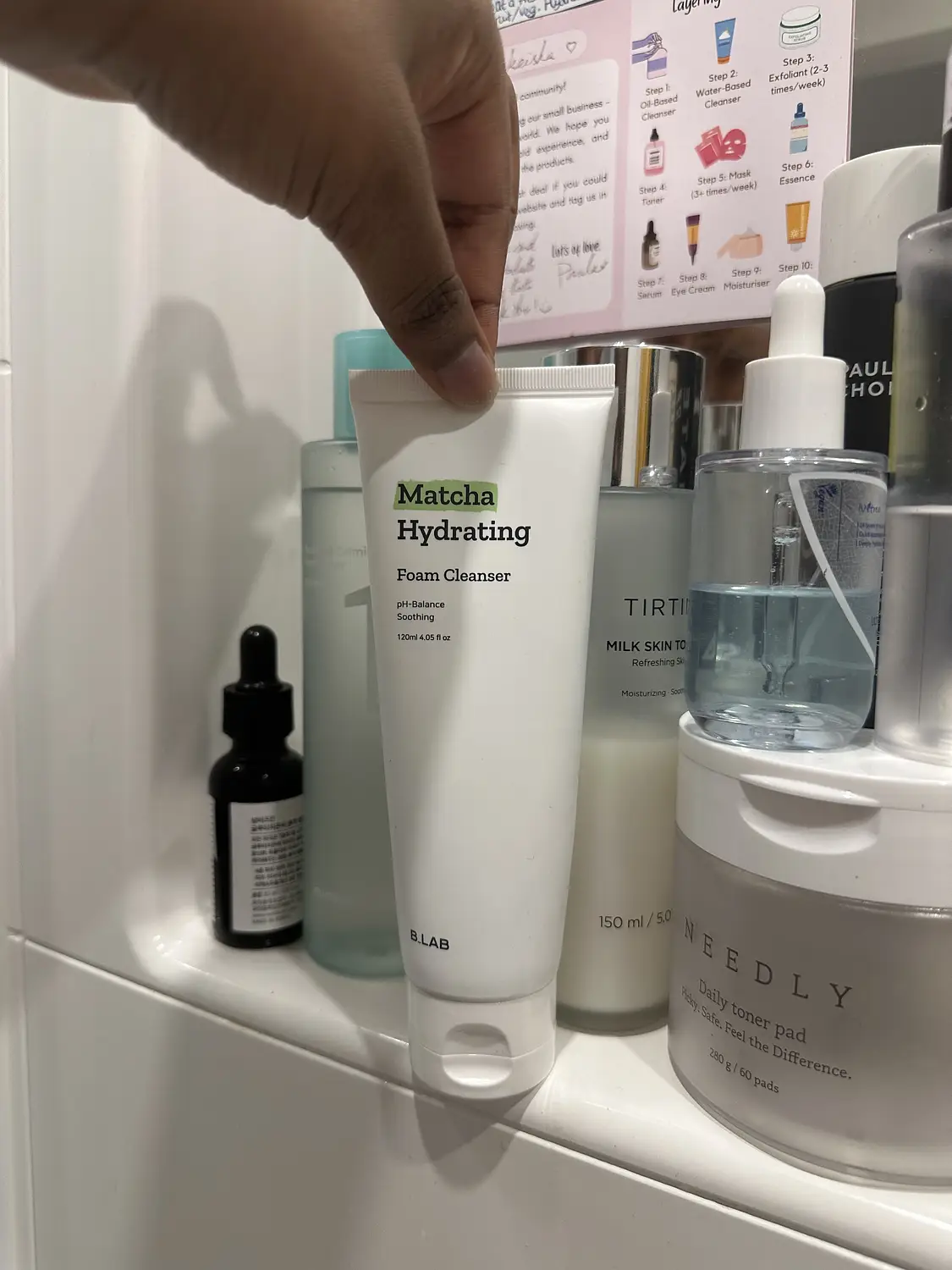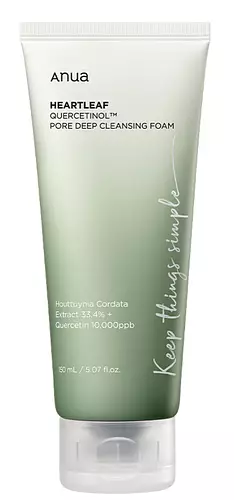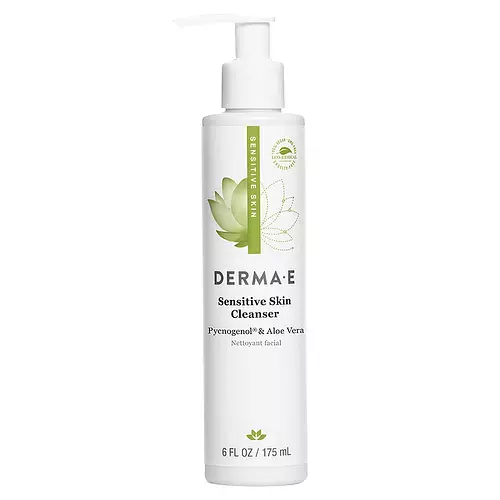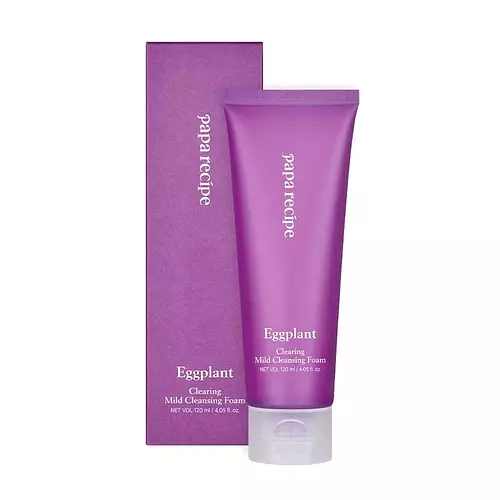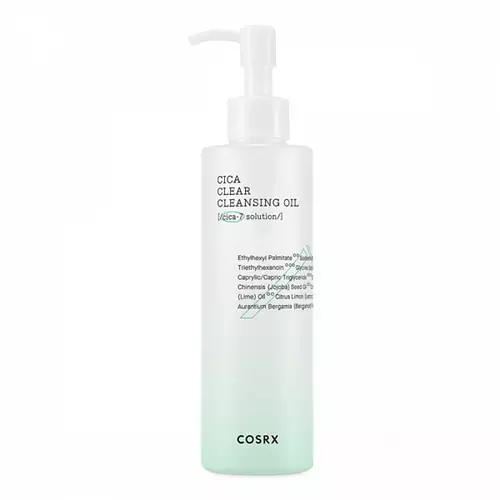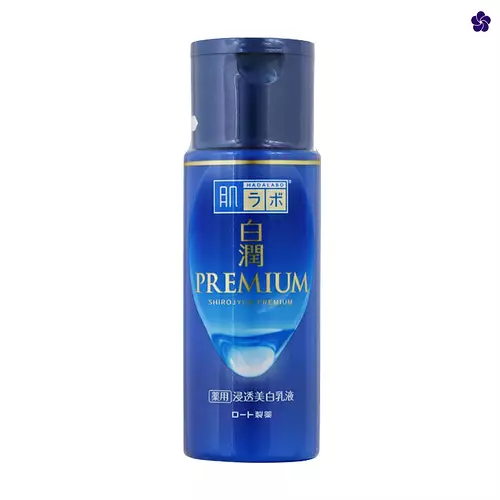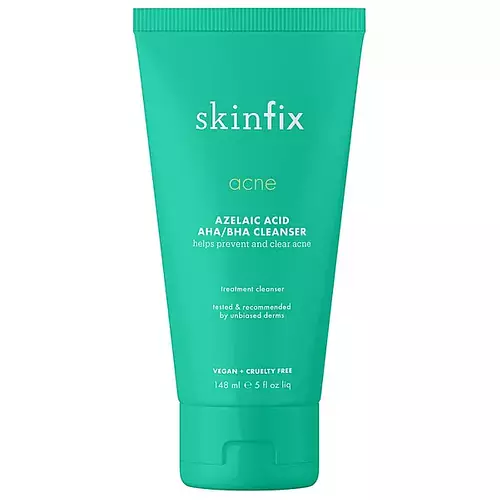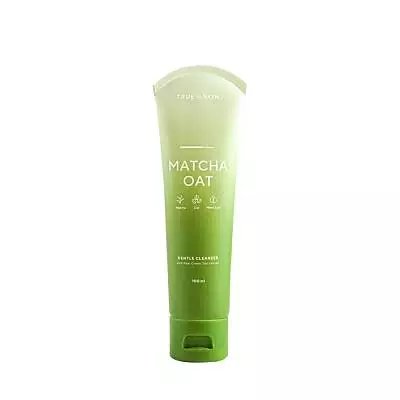B.LAB Matcha Hydrating Foam Cleanser Versus BYOMA Milky Moisture Cleanser
Updated on July 27, 2024
Overview
What they are
These products are both cruelty-free and reef safe . They have a total of 8 ingredients in common
Cool Features
They both contain ceramides
Suited For
They're both likely to be good for anti aging, dry skin, brightening skin, sensitive skin and scar healing
Free From
They both do not contain any harsh alcohols, common allergens, parabens, silicones or sulfates
We independently verify ingredients, and our claims are backed by peer-reviewed research. Spot a product that needs an update? Let us know.
Ingredient Info
B.LAB Matcha Hydrating Foam Cleanser 31 ingredients
BYOMA Milky Moisture Cleanser 44 ingredients
At a glance
Click on any of the items below to learn more
B.LAB Matcha Hydrating Foam Cleanser 31 ingredients
BYOMA Milky Moisture Cleanser 44 ingredients
Benefits
This product contains 2 ingredients that may have this attribute:
This product contains 5 ingredients that may have this attribute:
This product contains 4 ingredients that may have this attribute:
This product contains 1 ingredient that may have this attribute:
This product contains 2 ingredients that may have this attribute:
This product contains 1 ingredient that may have this attribute:
This product contains 1 ingredient that may have this attribute:
This product contains 1 ingredient that may have this attribute:
Concerns
This product contains 1 ingredient that may have this attribute:
This product contains 1 ingredient that may have this attribute:
This product contains 1 ingredient that may have this attribute:
Notable Ingredients
This product contains 1 ingredient that may have this attribute:
This product contains 1 ingredient that may have this attribute:
This product contains 1 ingredient that may have this attribute:
Benefits
This product contains 5 ingredients that may have this attribute:
This product contains 3 ingredients that may have this attribute:
This product contains 3 ingredients that may have this attribute:
This product contains 2 ingredients that may have this attribute:
This product contains 1 ingredient that may have this attribute:
This product contains 1 ingredient that may have this attribute:
This product contains 3 ingredients that may have this attribute:
Concerns
This product contains 5 ingredients that may have this attribute:
This product contains 3 ingredients that may have this attribute:
This product contains 1 ingredient that may have this attribute:
This product contains 1 ingredient that may have this attribute:
This product contains 1 ingredient that may have this attribute:
Ingredients Side-by-side
Ingredients Explained
These ingredients are found in both products.
Ingredients higher up in an ingredient list are typically present in a larger amount.
Water. It's the most common cosmetic ingredient of all. You'll usually see it at the top of ingredient lists, meaning that it makes up the largest part of the product.
So why is it so popular? Water most often acts as a solvent - this means that it helps dissolve other ingredients into the formulation.
You'll also recognize water as that liquid we all need to stay alive. If you see this, drink a glass of water. Stay hydrated!
Learn more about WaterGlycerin is already naturally found in your skin. It helps moisturize and protect your skin.
A study from 2016 found glycerin to be more effective as a humectant than AHAs and hyaluronic acid.
As a humectant, it helps the skin stay hydrated by pulling moisture to your skin. The low molecular weight of glycerin allows it to pull moisture into the deeper layers of your skin.
Hydrated skin improves your skin barrier; Your skin barrier helps protect against irritants and bacteria.
Glycerin has also been found to have antimicrobial and antiviral properties. Due to these properties, glycerin is often used in wound and burn treatments.
In cosmetics, glycerin is usually derived from plants such as soybean or palm. However, it can also be sourced from animals, such as tallow or animal fat.
This ingredient is organic, colorless, odorless, and non-toxic.
Glycerin is the name for this ingredient in American English. British English uses Glycerol/Glycerine.
Learn more about Glycerin1,2-Hexanediol is a multi-tasker ingredient. It acts as a preservative to increase shelf-life and can aid other preservatives in preventing microbe growth. 1,2-Hexanediol also helps the skin retain moisture as a humectant.
In products that are water-based, this ingredient can help stabilize perfumes and fragrances. It can also help make the texture of products softer and more smooth.
Hydrogenated Lecithin is created from the hydrogenation of lecithin. Hydrogenation is a chemical reaction between molecule hydrogen and another element.
Hydrogenated Lecithin is an emollient and emulsifier. As an emollient, it helps soften skin by trapping moisture within.
The phospholipids in Hydrogenated Lecithin can produce liposomes. Liposomes help other ingredients get through the skin barrier to be better absorbed.
As an emulsifier, it prevents oil and water ingredients from separating.
Learn more about Hydrogenated LecithinButylene Glycol (or BG) is used within cosmetic products for a few different reasons:
- It is a solvent, meaning that it helps to dissolve other ingredients. This also enhances the absorption of the product into one's skin.
- It is a humectant, which means that it helps attract moisture into the skin.
- It helps improve product application.
Overall, Butylene Glycol is a safe and well-rounded ingredient. It is unlikely to irritate skin, and works well with pretty much all other ingredients.
Ceramide NP is a type of ceramide.
Ceramides are intercellular lipids naturally found in our skin that bonds dead skin cells together to create a barrier. They are known for their ability to hold water and thus are a great ingredient for dry skin.
Ceramides are an important building block for our skin barrier. A stronger barrier helps the skin look more firm and hydrated. By bolstering the skin ceramides act as a barrier against irritating ingredients. This can help with inflammation as well.
If you would like to eat ceramides, sweet potatoes contain a small amount.
Read more about other common types of ceramides here: Ceramide AP Ceramide EOP
Learn more about Ceramide NPHydroxyacetophenone is antioxidant and helps with skin conditioning.
Antioxidants help fight off free-radical molecules. These unstable molecules may damage your skin cells. By helping stabilize free-radicals, antioxidants may help in anti-aging.
Hydroxyacetophenone boosts the efficiency of other preservatives.
Learn more about HydroxyacetophenoneEthylhexylglycerin (we can't pronounce this either) is commonly used as a preservative and skin softener. It is derived from glyceryl.
You might see Ethylhexylglycerin often paired with other preservatives such as phenoxyethanol. Ethylhexylglycerin has been found to increase the effectiveness of these other preservatives.
Ingredient Ratings
Here's what our community thinks of the ingredients in these products.
When to use
B.LAB Matcha Hydrating Foam Cleanser 31 ingredients
BYOMA Milky Moisture Cleanser 44 ingredients


Reviews
Here's what our community thinks
B.LAB Matcha Hydrating Foam Cleanser 31 ingredients
skinogre
I really do adore this cleanser, what people have said about this is extremely true. It smells of natural matcha, has an earthy light scent and...
I really do adore this cleanser, what people have said about this is extremely true. It smells of natural matcha, has an earthy light scent and contains ceramides, hyaluronic acid and Centella extract. This makes my skin feel nourished while putting it on despite its cleansed feeling. I can definitely see how some people may find it too harsh as I too have had the same experience, especially when I first started using it, I had to oscillate between my soon jung whip cleanser which is a lot gentler. But it became something that my skin really needs in summer/spring so I’d definitely recommend it for people in hot climates or just oily skin/sweaty skin. One thing I love about this cleanser is that it feels so good to rub in, it has a consistency of like powdered chalk butter then once you rub it in your hands it feels like a glossy conditioner texture.
What did this do for my skin:
- cleans my skin properly without leaving a slimy residue
- after I use it I tried to experiment by not applying toner but instead letting my skin air dry, I’ve noticed it takes a longer time to dry (about 6 more mins) than other cleansers I use this could be due to the hyaluronic acid and ceramides preventing water loss
-less dead skin cells come off than other cleansers when I wipe it off with my toner pads afterwards
-really feels like a clean slate
-the harshest I can cleanse my skin without exfoliators in my cleanser and tight uncomfortable skin
- makes me feel like I’m in a spa because of the smell hehe
How it differs from other cleansers:
-fungal acne ingredients safe 🤩
- has natural substance of matcha in it, so it smells really nice too
-really lovely texture
-doesn’t froth or foam but more so lathers and glides on face
Drawbacks:
-can be harsh for dry skin because of how deep it cleans
-I’d feel really worried when I first used it if I didn’t have extra gentler cleansers laying around in my room because it was a little too much for my skin to get used to (got there eventually)
Who I’d recommend it for:
- oily skin
- combination skin
- people with lots of closed commodones
-hot climate/sweating users
-people who want a deeper thorough cleanser without exfoliants like salicylic acid
When do I use it/recommend it for:
-summer, humid or dense areas
-mornings are good evening feels even better
How long it lasts:
Will update, only had it for 1 month but there’s plenty left.
Water and oil based Cleansers are the basics that need to be perfected, I wouldn’t recommend this for your first starter cleanser but definitely for someone wanting to niche down their specific needs depending on their learnt skin behaviors
daria_x
HOLY GRAIL😍 Cleans the face perfectly without stripping me out! Absolutely amazing for my skin <3 I recommend this to my oily dehydrated skin...
HOLY GRAIL😍 Cleans the face perfectly without stripping me out! Absolutely amazing for my skin <3 I recommend this to my oily dehydrated skin girlies :D

